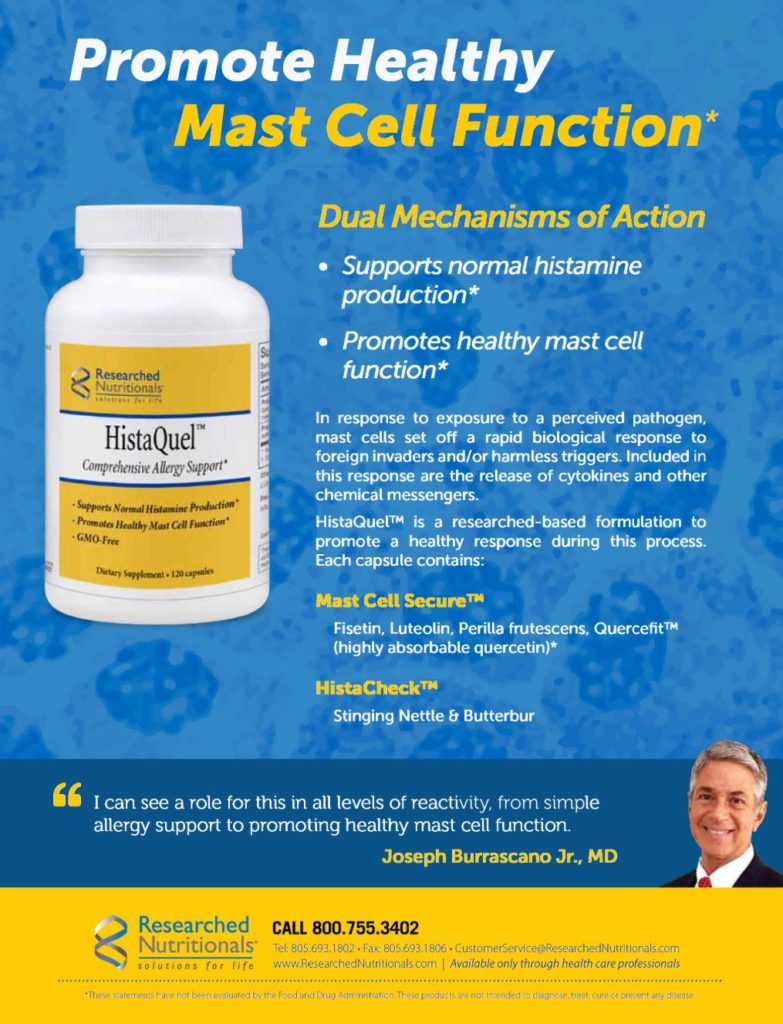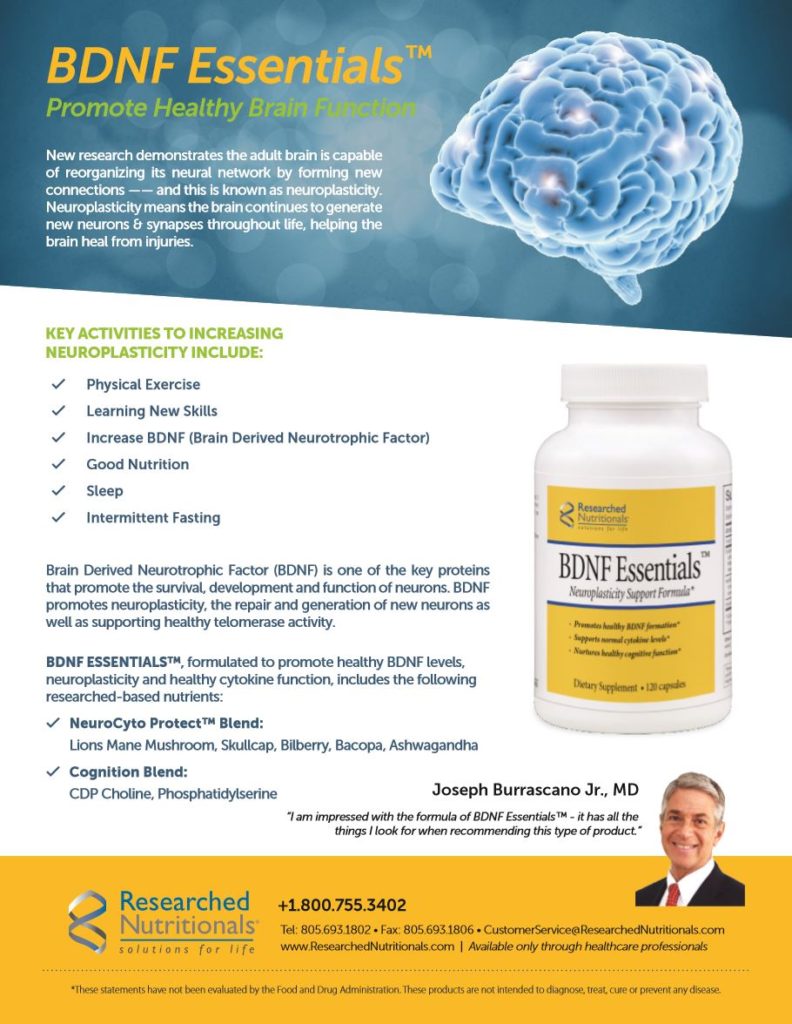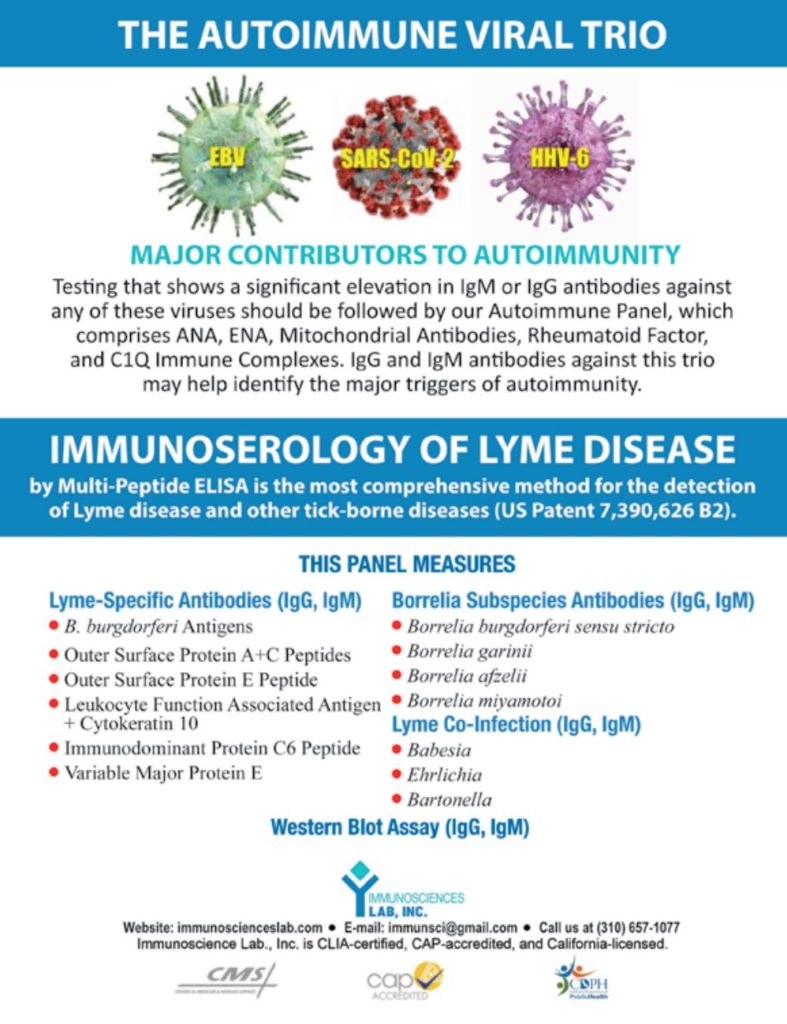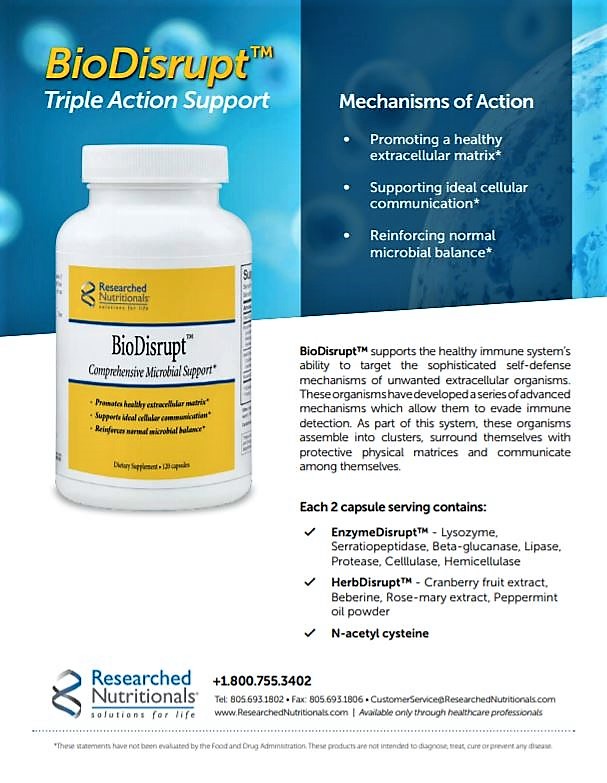by Erica Zelfand, ND
“I did something crazy. Don’t get mad,” says May, a 30-year-old woman with a longstanding history of severe anxiety. I look at her and raise my eyebrows.
May explains that after reading some articles on the use of the anesthesia drug ketamine in the treatment of mood disorders, she became eager to try it for herself. She consulted a few doctors locally, all of whom were unfamiliar with the treatment, before finally finding a ketamine provider in another state – whom she couldn’t afford to see. May then did something I would never recommend doing: she procured a small pouch of the stuff, called her best friend over to “chaperone,” and snorted a line.
I can barely see May as she tells me her story, as I’ve reflexively covered my face with my hands. Realizing that I am probably not creating a supportive atmosphere with this body language, I peel my palms away from my face, place them on my knees, take a deep breath, and ask, “Okay, so then what happened?”
“I fell into a K-hole,” she says, and my hands are back on my cheeks. “K-hole” is slang for the detached feelings and loss of motor control that accompany a moderate to high dose of ketamine.
“…but I knew that might happen,” she continues cautiously, “so I didn’t freak out. I just kept breathing.” May does her best to describe the mystical visions she saw while under the drug’s acute influence. “I viewed my life from totally new angles, like my consciousness was this golden cake batter being mixed and folded over and over. And then I could really see what my life might look like if I made some intimidating but totally doable changes.”
Ketamine treatment is well-suited for patients
who are “stuck” in chronic depression.
The above conversation happened about two weeks after May’s ketamine experience. In that short period of time, May had ended a toxic three-year relationship and applied to graduate school. She also denied having had any panic attacks in that time and was happy to report that she hadn’t popped a single Ativan, the benzodiazepine medication she used to take almost daily for anxiety.
I had heard of ketamine’s off-label use in the care of treatment-resistant depression and other mood disorders before but hadn’t thought much of the matter until this conversation with May. Since then, my understanding of and appreciation for ketamine’s role in the treatment of a variety of stubborn mental health conditions has deepened greatly.
Ketamine’s Antidepressant and Mood-Stabilizing Effects
Ketamine is readily available, is inexpensive to manufacture, and has a relatively good safety profile. It is likely for these reasons that it is the most popular anesthesia drug worldwide, used to induce temporary anesthesia, amnesia, and paralysis.1 Its low risk for causing respiratory suppression and other complications make ketamine the anesthetic of choice in various surgical and procedural settings, including those in adults, children, and animals.2-4
When used at sub-anesthesia doses, ketamine causes dissociation, or feelings of detachment from one’s own body. At a slightly higher dose – somewhere between dissociation and loss of consciousness – ketamine can also induce a mystical journey, in which the user experiences transcendental visualizations and potentially gleans new insights about their life. Ketamine is sometimes used recreationally, a context in which the drug is referred to as “Special K.”
Although it is by no means a new substance, ketamine is now being viewed from an entirely new angle. The recent explosion of interest in ketamine in the treatment of mood disorders has yielded several clinical trials demonstrating the drug’s great potential as a treatment for severe, chronic, and/or treatment-resistant depression and suicidality.5-10
The drug is further being investigated as a potential treatment for anxiety,11,12 alcohol and substance use disorders (addictions),13 depression associated with acute alcohol withdrawal,14 bipolar depression (manic depression),15,16 obsessive-compulsive disorder (OCD),17 post-traumatic stress disorder (PTSD),18,19 various chronic pain disorders,20,21 and personality disorders.22
Megan Oxley, MD, an emergency room doctor turned ketamine specialist and one of the founding members of American Society of Ketamine Physicians (ASKP), explains that ketamine treatment is well suited for patients who are “stuck.” “There is a specific pattern happening in the brain that will not stop firing in certain conditions,” she explains, “and the goal is to ‘unstick’ people so they can move forward.”
Post-treatment, Dr. Oxley often hears her patients say things like, “I feel like a layer of dust has been cleared off of my brain,” and “I feel like my brain went through the carwash.” Or, as one patient put it, “I have a presence of mind now that I knew was there but that I could not reach before. It’s just calm now.”
Do We Really Need Another Antidepressant Drug?
Depression is the most common mental illness and the leading cause of disability worldwide.23 It afflicts women more often than men.24 Anxiety too is a common ailment – so common that it is often mislabeled as stress, insomnia, or just a natural consequence of living in a fast-paced society. According to a 2017 survey conducted by the National Institute of Mental Health (NIMH), over 18% of American adults live with mental illness – that’s almost one in five people, or an estimated 46.6 million individuals.25
Despite the liberal prescription of pharmaceutical antidepressant medications, depression and anxiety rates have unfortunately continued to steadily climb.26 In recent years it has become clear that antidepressant and anxiolytic drugs don’t work nearly as well as they used to or as we once thought they did,27 and the theory that depression is caused by serotonin deficiency or a shortage of other monoamine neurotransmitters has yet to be substantiated.28 Patients, providers, researchers, and even journalists are questioning the efficacy of antidepressant drugs with such intensity that somehow the field of psychiatry itself has come under serious scrutiny.29 With a paucity of new drugs going to market, there has been a growing interest in considering new applications of already-existing drugs, ketamine being among the most promising.
Ketamine has been shown to yield robust, rapid improvements in mood and behavior, significantly alleviating depressive symptoms and suicidal ideation within a matter of mere hours or days.30-32 It has been demonstrated to affect brain chemistry more quickly and effectively than conventional antidepressant drugs,33 which typically require daily dosing for a matter of weeks before yielding inconsistent results.34 Ketamine further appears to be less likely than SSRI drugs to trigger mania in those with bipolar disorder.35,36
How Does It Work?
Discovered in 1962 and approved by the FDA in 1970, ketamine (2-O-chlorophenyl-2-methylamino cyclo-hexanone) is by no means a new drug.37 Most of our understanding of its chemical mechanisms, however, is appreciated through the lens of anesthesiology. Specifically, the drug is an uncompetitive antagonist of the N-methyl-D-aspartate receptor (NMDAR) and subsequently influences glutamate concentrations.38-41
NMDAR antagonism helps mitigate pain by dampening central hypersensitivity and reducing opioid tolerance,42 and is also likely responsible for ketamine’s dissociative, anesthetic, amnesic, and hallucinatory properties.43
It’s not entirely clear how NMDAR antagonism yields positive outcomes for mental health, however.44 One hypothesis is that ketamine causes a persistent increase in glutamate release in certain regions of the brain, which in turn engenders and sustains antidepressant effects.45-48 Another hypothesis suggests that ketamine’s inhibitory effect on NMDARs influences a cascade of cellular signaling in such a manner as to augment synaptic plasticity.49 To this point, ketamine’s antidepressant effects are not only rapid in onset, but are also quite durable, outlasting the drug’s physical presence in the body post administration.50
NMDAR antagonism is likely not the full story on how the drug alleviates depressive symptoms, however.51
Ketamine has been shown to influence opioid receptor sites and affect dopamine turnover, which may further explain not only its calming, antidepressant, and pain-relieving benefits, but also its potential for abuse.52,53
Ketamine has further been demonstrated to stimulate the production of brain-derived neurotrophic factor (BDNF), a protein that supports adult neurogenesis.54,55 Ketamine has also been shown to augment synaptogenesis, thereby enhancing synaptic function and plasticity far greater than the SSRIs and other common antidepressants.56 When administered to rats, ketamine led to increased growth and improved function in the dendritic spine synapses of the prefrontal cortex. It has been hypothesized that ketamine rapidly enhances neural connectivity by creating new connections between already-existing neurons – a process that yields benefits much more rapidly than waiting for new nerve cells to grow. This improved connectivity between neurons may very well alleviate mood imbalances.57
Models for Ketamine Treatment
A quickly growing base of practitioners are eagerly treating their patients with ketamine, employing a variety of administration routes and dosing regimens. There is no one set protocol for using ketamine in the treatment of mental health ailments, however; and practitioners disagree on how to best use the drug in these off-label contexts. The lack of one clear gold standard of use reflects not only the novelty of ketamine as a mental health drug, but also its versatility. “The beautiful thing about ketamine is there are so many ways to use it,” explains Dr. Oxley.
Most of the approaches to using ketamine in patients with depression and other mood disorders fall into one of four categories: (1a) stand-alone intravenous infusion [upon which is modeled the (1b) FDA-approved use of S-ketamine nasal spray]; (2) very low-dose nasal spray or troche as daily or semi-weekly maintenance; (3) ketamine-assisted psychotherapy; and (4) ketamine-induced mystical journey followed by integration counseling.
Stand-Alone Intravenous Infusions
In this approach, also known as the Diamond & McShane protocol, a patient receives ketamine through a chemotherapy-based model entailing an intravenous (IV) infusion of the drug at a dose of 0.5 mg/kg delivered over 40 to 60 minutes. A typical course of treatment consists of an initial burst of six such treatments clustered within a two-week period to “reset” the NMDARs followed by ongoing maintenance treatments every four to six weeks or as needed.
Curiously, the 40-to-60-minute appointment length of the Diamond & McShane protocol was likely inspired by the business model of chemotherapy and applied to ketamine treatment for scheduling convenience. Likewise, the choice of six infusions over two weeks is likely borrowed from the world of electroconvulsive therapy (ECT).
Nevertheless, this method of ketamine administration has been endorsed by the National Institute of Mental Health (NIMH) and the American Psychiatric Association (APA).58,59 Serial IV infusion is perhaps the most common (above-board) method of ketamine administration in America today, and for good reason: a series of six ketamine infusions was shown in one (small) study to send 66% of depressed patients into remission,60 and a whopping response rate of 71% was observed in another trial.61
Although this approach typically yields robust antidepressant effects for most patients,62,63 that relief is typically nondurable, with benefits lasting anywhere from a few days to a few weeks post infusion and thus necessitating ongoing treatment. This model also reflects a staunchly Western emphasis on biochemical properties, pulling the locus of healing away from the patient and nature, instead projecting it onto a synthetic chemical delivered in a rather “medicalized” milieu. Patients receiving this method of treatment have an IV catheter in their arm for around an hour, which is neither the most comfortable (nor comforting) experience for most people.
But Raquel Bennett, PsyD, ketamine treatment specialist and the founder of the KRIYA Ketamine Research Institute, patiently points out the merits of this protocol, explaining that it’s a fantastic treatment option for those who are too depressed to engage in the psychotherapeutic counseling process, those who have already tried therapy or feel “talked out,” those who are acutely suicidal, and/or those with genetically-influenced glutamate processing issues.
Eli, a 53-year-old with chronic depression and a strong family history of depression and death by suicide, is one such patient who benefitted from IV ketamine. After tearing his ACL playing soccer, Eli underwent arthroscopic surgery and woke in the recovery room with his depression nowhere to be found. Much to his surprise, the following ten days were some of the best of his adult life, mood-wise, after which time the dark clouds of depression slowly crept back.
Convinced his temporary improvement in mood had something to do with the surgery, Eli procured his medical records and “Googled” every drug listed in the procedure notes. This led Eli to articles about ketamine’s off-label use in the treatment of depression, which motivated him to find a ketamine provider and begin a course of treatment. Twenty-four hours after his first ketamine infusion, Eli’s PHQ-9 depression scale score dropped from 19 to 6. He now receives ketamine infusions every six weeks or so, incorporating the drug into his ongoing maintenance plan of counseling, healthy eating, and exercise. He says this is the best he’s consistently felt in his entire adult life.
FDA-Approved Nasal Spray
The FDA has recently approved an S-ketamine (esketamine) nasal spray for the treatment of depression.64
Ketamine is a chiral molecule, meaning it exists in both “left hand” and “right hand” forms, known as S- and R- enantiomers, respectively. The FDA has not approved both enantiomers in the treatment of depression, however, just the “left-handed” S- form.
Manufactured by Johnson & Johnson and sold under the brand name Spravato, S-ketamine is administered under medical supervision at approved treatment facilities using a model quite similar to the IV infusion approach described above.65,66 Spravato comes with a price tag of $590 per 56 mg and $885 per 84 mg, which means that bi-weekly treatments during the first month of care run anywhere from $4,720 to $6,785 – and that’s just for the drug itself, before administration and observation costs.67 It’s likely no coincidence that the patentable (read: profitable) form of the drug was used in the studies funded by J&J that ultimately led to the FDA’s approval of S-ketamine – and not generic ketamine – for the treatment of depression.
Regular, racemic ketamine – a fraction of the cost at $0.50 to $3.75 for 100 mL – yields great results, however, making doctors question if the “fancy” S-form is truly any better. Nevertheless, the FDA’s approval of S-ketamine has paved the way for insurance coverage of ketamine therapy, which may be a win for patients who could not otherwise afford the treatment.
Daily or Semi-Weekly Ketamine Maintenance
Another approach to ketamine treatment entails taking the drug at low doses daily or semi-weekly, typically in the form of nasal spray or troche prepared by a compounding pharmacy and dispensed directly to the patient.
With the nasal spray, a patient takes anywhere from 60 to 100 mg of ketamine spray daily. A dosage commonly seen at one compounding pharmacy I consulted is one spray per nostril three to five times daily, with each pump delivering 10 mg of ketamine. As an alternative option, the drug can also be administered in sublingual or buccal troche format, at a dose ranging anywhere from 20 to 600 mg. Many individuals experience poor absorption of ketamine in troche form; hence the higher dosage use and the broad range of dosages available. The most common side effect of these formulations is feeling “disconnected,” which is perhaps unsurprising, considering that ketamine is a dissociative drug. Reducing the dose typically resolves this symptom.
Low-dose ketamine therapy can be used as an ongoing standalone therapy or in conjunction with the Diamond & McShane protocol to prolong the intervals between infusions. In fact, Dr. Oxley estimates that ketamine troches taken two to three times weekly allow her patients to double the length of time they can wait between intravenous treatments.
Ketamine-Assisted Psychotherapy
In another application of ketamine in the treatment of mood disorders, the drug is administered within the context of an individual or group therapy session overseen by a medical provider and a trained counselor. In this setting, the drug can be taken via intramuscular or subcutaneous injection in the dose range of 0.3 to 0.8 mg/kg. The drug can also be taken as a troche or drank as a “cocktail” of the injectable liquid mixed with juice. Lasting anywhere from 90 minutes to three hours, these ketamine-supported sessions leverage the dissociative effects of the drug to improve the “mileage” of psychotherapy, allowing patients to take a more active role in the healing process.
“The goal is typically to get the patient to focus on something they want to address but that’s otherwise been difficult to access emotionally,” explains psychologist and qualitative researcher Will Barone, PsyD. The dissociative effects of the drug at this dosage help to ease hypervigilance and relax defense mechanisms, thus allowing patients to explore subject matter that might otherwise be too painful to approach in therapy.
Ketamine’s influence on synaptic function and plasticity may further serve as an adjuvant to psychotherapeutic counseling and may help patients make new connections – both literally and metaphorically. Considering the transient nature of ketamine’s pharmacological effects, pairing the drug’s acute actions with psychotherapy is highly likely to enhance the durability of its therapeutic outcomes.68
The approach of ketamine-assisted therapy is not dissimilar to the model of using MDMA during therapy sessions in the treatment of treatment-resistant PTSD – a breakthrough therapy currently in Phase 3 clinical trials that’s showing great promise.69,70
One ketamine-assisted therapy success story is that of Moe, a 26-year-old graduate student who had struggled with depression since adolescence. After trying numerous medications, from antidepressants to testosterone injections, Moe decided to try ketamine-assisted psychotherapy. Moe relaxed as the dissociative effects of the drug took hold. Sensing a great distance between himself and his woes, Moe was able to fully admit to himself that he was gay and that there wasn’t anything he could do to change that. Unveiling and acknowledging this piece of his identity allowed Moe to make sense of his lifelong struggles: raised in a religious household, Moe’s staunchly conservative father had often beaten up on Moe, pushing him to be more “masculine.” Moe always knew his father was ashamed of him, and he unknowingly took on that shame in childhood, hating himself for being “a sissy boy.” Since uncovering and reprocessing this piece of his history, Moe has focused subsequent (non-medicated) therapy sessions on fostering self-acceptance and creating healthy boundaries.
When we consider the situational undertones of depression and anxiety, as seen in the case of Moe, it’s clear that ketamine synergizes beautifully with psychotherapy.
Ketamine As Psychedelic Medicine
In another model of using ketamine to treat severe, chronic, and treatment-resistant mental ailments, a ketamine-induced mystical journey is followed by integration psychotherapeutic counseling.
In a carefully selected pool of patients well prepared for mystical journeying, ketamine is administered by a medical professional at a typical dose of 1.0 to 2.0 mg/kg, usually through intramuscular or subcutaneous injection but sometimes intravenously. Within a few minutes of receiving the drug, the patient enters a state of altered consciousness, during which dream-like visions appear and motor function is impaired.71 These visions are often accompanied by other experiences typically associated with mystical journeys, such as new insight into the nature of one’s existence, feelings of unity, and a sensed presence of God/Gaia/Spirit. The dissociative properties of the drug, furthermore, allow patients the unique experience of softening into a disembodied state and letting go.
The journey, which lasts anywhere from one to two hours, is a largely internal process, during which the patient typically lays silently with their eyes closed while listening to music. The primary role of the provider on “trip day” is to ensure the patient’s physical safety. The day after the session (or sometimes later that same day), the provider meets with the patient to explore the themes of the journey, reflect upon their relevance, and explore ways to integrate them into the patient’s life moving forward.
In her recent article on the subject, Dr. Bennett explains: “When clinicians choose to work in this way, they are working in a psychedelic and shamanic paradigm, in which the mystical visions are valued.”72
As we’ve seen with the new wave of research concerning other psychotropic substances, psychotherapeutic counseling can make all the difference within the context of psychedelic therapy. In fact, both new and old models of psychedelic medicine regard mystical experiences as powerful adjuvants to psychotherapy.73-75
Dr. Barone explains: “The medicine induces a new awareness for a reason; it opens up the therapeutic process and gets [the patient] thinking about different themes in new ways.” In this light, patients are often able to reach new breakthroughs in therapy that they might otherwise spend weeks, months, or even years skirting around.
May’s story, shared at the beginning of this article, is one such example (albeit an offbeat one) of how a ketamine-fueled mystical experience can yield profound healing benefit.
Although little research has been done comparing ketamine-induced psychedelic journeys to those of other entheogenic substances, one clear benefit to ketamine is its lack of negative interactions with other medications, mainly because it does not significantly affect serotonin levels.
Whereas patients must taper off of psychiatric medications before taking MDMA, ayahuasca, and some other psychedelic medicines that affect the 5HT2A serotonin receptors,76-78 this is not a prerequisite for healing with ketamine.79,80 Another difference between ketamine and many other psychedelics is the relatively short duration of the associated trip. Whereas a journey with LSD can last up to 14 hours, a ketamine-associated trip lasts an average of 75 minutes.81
As beautiful as mystical experiences can be, they can also be potentially terrifying to those who are not ready or willing to explore different states of consciousness or to those who have not been adequately prepared for the experience. For this reason, patients must be carefully selected and supported prior to receiving ketamine at psychedelic doses. Likewise, clinicians using ketamine in this way should be skilled themselves in mystical journeying, trip sitting, and entheogenic integration.
Is “Special K” the Special Cure?
Given the paucity of effective and rapid-acting treatments for depression and other mood disorders, providers and consumers have understandably been quick to pounce on the promise of ketamine. But have they been hasty?
According to the data Dr. Bennett encountered at the 2018 International Conference on Ketamine in Psychiatry, the reported efficacy of ketamine in the treatment of depression in the general psychiatric population has dropped from 66% to now 30% to 40%.
Ketamine is a powerful adjuvant to psychotherapy.
This drop-in efficacy could be because ketamine is now being used to treat non-clinically indicated conditions in patients who might be better served by a different therapy. “What stood out to me about these data sets is that the statistical efficacy appeared to go down as the researchers loosened the criteria for inclusion in the studies,” explains Dr. Bennett. “That made it clear to me that ketamine is not equally useful for all of the different kinds of psychiatric or psychological distress.”
She elaborates that grief, stress, physical illness, sleep deprivation, and unexpressed anger can all present as depression, but do not warrant treatment with ketamine.
In a quick-fix culture in constant search of miracle drugs that act now, however, overzealous consumers may be demanding the wrong remedy for their ailments – and overzealous providers may be obliging them.
To meet the sudden and growing demand for the drug, a number of anesthesiologists have begun offering intravenous infusions of ketamine to those with depression and other mood disorders. Dr. Bennett points out that while anesthesiologists are undoubtedly familiar with the administration of ketamine and the management of its side effects, they are not always trained in psychological assessment and thus may be at risk of over-prescribing the therapy. The best practice would therefore likely be to have a mental health provider (such as a psychiatrist) recommend a treatment regimen that would then be administered by an anesthesiologist (or another licensed provider).
The protocols for using ketamine in surgical, procedural, and pain-management settings, furthermore, may not be entirely fitting within the field of mental health. For example, in settings not related to depression, the benzodiazepine drug midazolam (Versed) is often administered concurrently to help soothe the anxiety and dysphoria that patients may experience while under the acute effects of ketamine. While midazolam does in fact help dampen some of ketamine’s unpleasant side effects, it has also been observed to reduce the antidepressant actions of ketamine, thus undermining the point of treatment.82 For this reason, patients are likely to be better served by abstaining from all benzodiazepine medications in the days before, during, and after ketamine treatments.
Ketamine treatment is not without its risks, furthermore, which include bladder problems, kidney disease, and memory deficits.83,84 As with all medical interventions, it is important to mindfully select patient candidates and to deliver the lowest cumulative amount of the drug to yield the maximum therapeutic benefit.
Like all psychiatric drugs, ketamine is likely to work best when used as a part of a comprehensive treatment plan and not as a standalone therapy. Sleep, healthy eating, mindfulness meditation practices, exercise, psychotherapy, time in nature, and meaningful social connections are all cornerstones in both the prevention and treatment of mood disorders. Some patients also require nutritional supplements, herbal therapies, and/or pharmaceutical psychiatric drugs – not in lieu of the above practices and ketamine treatment, but in addition to them.
Integrative practitioners are endowed with an impressive toolkit of therapies relevant to mental health. These include but are by no means limited to neurofeedback, hypnosis, craniosacral therapy, life coaching, and shamanic healing – all of which can occasion powerful shifts on the spiritual and physical planes. Energetic therapies like Reiki, acupuncture, homeopathy, and bio-therapeutic drainage may be helpful as well. Breathing techniques such as pranayama, holotropic breathwork, and biodynamic breathing may further help with emotional recovery. Assessment of a patient’s endocrine, nervous, and digestive systems is also imperative in the comprehensive workup and treatment of mood disorders and is best done by a naturopathic physician (or another well-trained integrative provider). Considering that the pathophysiology of depression includes inflammatory processes,85 assessing and addressing a patient’s inflammatory response is likely an important step in treatment. Screening for food intolerances, environmental exposures, and stealth infections is further indicated in some cases. Nutritional deficiencies have been implicated in numerous mood disorders and are surprisingly common,86-88 as are high intestinal permeability (aka “leaky gut”), celiac disease, non-celiac gluten sensitivity, and other digestive conditions that predispose patients to nutritional malabsorption and neuroinflammation89,90 – all of which can be both diagnosed and treated by naturopathic physicians.
Summary
Ketamine is an affordable, widely available drug that rapidly engenders robust antidepressant effects. Unlike most antidepressant drugs, which affect the monoaminergic neurotransmitters and/or their receptor sites, ketamine acts strongly on NMDARs, affects glutamate concentrations, moderately stimulates opioid receptors, and promotes synaptogenesis. These properties may explain ketamine’s rapid onset of action and the durability of its effects, as well as its relative paucity of negative side effects and its lower risk of triggering mania in those with bipolar disorder as compared to other antidepressant drugs. Unlike SSRIs, which can take weeks to yield improvements, ketamine acts within mere hours or days.
Time will tell if the expensive S-ketamine formulation patented by Johnson & Johnson and approved by the FDA for the treatment of depression works any better than the generic racemic ketamine currently used off-label.
Ketamine therapy is highly customizable to the unique needs of the patient and can be delivered via a number of different routes of administration and in a variety of settings, from the staunchly Western to the shamanic. It is likely most effective when paired with psychotherapy and is in fact a powerful adjuvant to counseling.
When used in mystical contexts, ketamine engenders transcendental experiences accompanied by vivid images seen in the mind’s eye. Unlike the “classic” psychedelics, ketamine is legal, is widely available, delivers a relatively short journey, and can be safely combined with most antidepressant drugs (although ideally not with benzodiazepines, which seem to attenuate its antidepressant effects).

Ketamine is a not a miraculous one-size-fits-all cure but rather a considerably powerful synergist to other dietary, lifestyle, and therapeutic practices in a mindfully selected pool of patients. Within the context of a comprehensive healing plan, ketamine offers patients a highly effective, novel approach to managing and treating depression, suicidal ideation, and other mood disorders. Indeed, it seems that ketamine has fairly earned its moniker “Special K.”
References
1. Jaksch W, Likar R, Aigner M. “[Ketamine in the therapy of chronic pain and depression].” Wien Med Wochenschr. 12 Apr 2019.
2. Oh S, et al. Efficacy of ketamine in pediatric sedation dentistry: a systematic review. Compend Contin Educ Dent. 2018 May; 39(5): e1-e4.
3. Gao M, Rejaei D, Liu H. Ketamine use in current clinical practice. Acta Pharmacol Sin. 2016 Jul; 37(7): 865-72.
4. Marland S, et al. Ketamine: use in anesthesia. CNS Neurosci Ther. 2013 Jun; 19(6): 381–389.
5. Taiminen T. Ketamine as treatment for depression. Duodecim. 2017; 133(1): 52-60.
6. Andrade C. Ketamine for depression, 2: diagnostic and contextual indications. J Clin Psychiatry. May 2017; 78(5): e555-e558.
7. Phillips JL, et al. Single, repeated, and maintenance ketamine infusions for treatment-resistant depression: a randomized controlled trial. Am J Psychiatry. May 1, 2019; 176(5): 401-409.
8. Dadiomov D, Lee K. The effects of ketamine on suicidality across various formulations and study settings. Ment Health Clin. 2019 Jan; 9(1): 48–60.
9. De Berardis D, et al. Eradicating suicide at its roots: preclinical bases and clinical evidence of the efficacy of ketamine in the treatment of suicidal behaviors. Int J Mol Sci. 2018 Oct; 19(10): 2888.
10. Singh JB, et al. Intravenous esketamine in adult treatment-resistant depression: a double-blind, double-randomization, placebo-controlled study. Biol Psychiatry. 2016 Sep 15; 80(6): 424-431.
11. Taylor JH, et al. Ketamine for social anxiety disorder: a randomized, placebo-controlled crossover trial. Neuropsychopharmacol. 2018 Jan; 43(2): 325–333.
12. Banov MD, et al. Efficacy and safety of ketamine in the management of anxiety and anxiety spectrum disorders: a review of the literature. CNS Spectr. 2019 Jul 24: 1-12.
13. McAndrew A, et al. A proof-of-concept investigation into ketamine as a pharmacological treatment for alcohol dependence: study protocol for a randomised controlled trial. Trials. 2017; 18: 159.
14. Getachew B, Tizabi Y. Both Ketamine and NBQX attenuate alcohol-withdrawal induced depression in male rats. J Drug Alcohol Res. 2019;8. pii: 236069.
15. Correia-Melo FS, et al. Rapid infusion of esketamine for unipolar and bipolar depression: a retrospective chart review. Neuropsychiatr Dis Treat. 2017; 13: 1627–1632.
16. Nugent AC, et al. Neural correlates of rapid antidepressant response to ketamine in bipolar disorder. Bipolar Disord. 2014 Mar; 16(2): 119–128.
17. Bloch MH, et al. Effects of ketamine in treatment-refractory obsessive-compulsive disorder. Biol Psychiatry. 2012 Dec 1; 72(11): 964–970.
18. Li L, Vlisides PE. Ketamine: 50 years of modulating the mind. Front Hum Neurosci. 2016; 10: 612.
19. Feder A, et al. Efficacy of intravenous ketamine for treatment of chronic posttraumatic stress disorder: a randomized clinical trial. JAMA Psychiatry. 2014 Jun; 71(6): 681-688.
20. Patil S, Anitescu M. Efficacy of outpatient ketamine infusions in refractory chronic pain syndromes: a 5-year retrospective analysis. Pain Med. 2012 Feb; 13(2): 263-9.
21. Correll GE, et al. Subanesthetic ketamine infusion therapy: a retrospective analysis of a novel therapeutic approach to complex regional pain syndrome. Pain Med. 2004 Sep; 5(3): 263-275.
22. Moran M. Could ketamine help patients with borderline personality disorder? Psychiatry News. American Psychiatric Society [Online]. Available at: https://psychnews.psychiatryonline.org/doi/10.1176/appi.pn.2018.pp4b1 Published April 20, 2018. Accessed August 1, 2019.
23. Depression. World Health Organization [Online]. Available at: https://www.who.int/news-room/fact-sheets/detail/depression Published 22 March 2018.Accessed July 2019.
24. Prevalence of any mental illness. NIMH [Online]. Available at: https://www.nimh.nih.gov/health/statistics/mental-illness.shtml#part_154785 Accessed 23 May 2019.
25. Prevalence of any mental illness. NIMH [Online].
26. Fox M. Major depression on the rise among everyone, new data shows. NBC News May 11, 2018.
27. Penn E, Tracy DK. The drugs don’t work? Antidepressants and the current and future pharmacological management of depression. Ther Adv Psychopharmacol. 2012 Oct; 2(5): 179–188.
28. Cowen PJ, Browning M. What has serotonin to do with depression? World Psychiatry. 2015 Jun; 14(2): 158–160.
29. Menand L. Head case: can psychiatry be a science? New Yorker Magazine [Online]. March 1, 2010.
30. Berman RM, et al. Antidepressant effects of ketamine in depressed patients. Biol Psychiatry. 2000 Feb 15; 47(4): 351-354.
31. Aan Het Rot M, et al. Ketamine for depression: where do we go from here? Biol Psychiatry. 2012 Oct 1; 72(7): 537-547.
32. Murrough JW. Ketamine as a novel antidepressant: from synapse to behavior. Clin Pharmacol Ther. 2012 Feb; 91(2): 303-309.
33. Hyde SJ. How does it work? In: Ketamine for Depression. Xlibris Corporation; 2015.
34. Zarate C. Highlight: Ketamine: a new (and faster) path to treating depression. NIMH [Online]. Available from: https://www.nimh.nih.gov/about/strategic-planning-reports/highlights/highlight-ketamine-a-new-and-faster-path-to-treating-depression.shtml Accessed 8 August 2019.
35. Banwari G, Desai P, Patidar P. Ketamine-induced affective switch in a patient with treatment-resistant depression. Indian J Pharmacol. 2015 Jul-Aug; 47(4): 454–455.
36. Patel R, et al. Do antidepressants increase the risk of mania and bipolar disorder in people with depression? A retrospective electronic case register cohort study. BMJ Open. 2015; 5(12): e008341.
37. Domino, EF. Taming the ketamine tiger. Anesthesiology. September 2010; 113(3): 678–684.
38. Castner SA, Williams GV. Tuning the engine of cognition: a focus on NMDA/D1 receptor interactions in prefrontal cortex. Brain Cogn. 2007 Mar; 63(2): 94-122.
39. MacDonald JF, Miljkovic Z, Pennefather P. Use-dependent block of excitatory amino acid currents in cultured neurons by ketamine. J Neurophysiol. 1987 Aug; 58(2): 251-66.
40. Huettner JE, Bean BP. Block of N-methyl-D-aspartate-activated current by the anticonvulsant MK-801: selective binding to open channels. Proc Natl Acad Sci U S A. 1988 Feb; 85(4):1307-1311.
41. MacDonald JF, Nowak LM. Mechanisms of blockade of excitatory amino acid receptor channels. Trends Pharmacol Sci. 1990 Apr; 11(4): 167-72.
42. Monitto CL, Yaster M. N-methyl-D-aspartate receptor antagonists. Smith’s Anesthesia for Infants and Children. 8th Ed. 2011.
43. Kohrs R, Durieux ME. Ketamine: Teaching an old drug new tricks. Anesthesia & Analgesia. November 1998; 87 (5): 1186–1193.
44. Tyler MW, et al. Classics in chemical neuroscience: ketamine. ACS Chemical Neuroscience. 21 April 2017; 8 (6): 1122–1134.
45. Miller OH, Moran JT, Hall BJ. Two cellular hypotheses explaining the initiation of ketamine’s antidepressant actions: Direct inhibition and disinhibition. Neuropharmacol. 2016 Jan; 100: 17-26.
46. Homayoun H, Moghaddam B. NMDA receptor hypofunction produces opposite effects on prefrontal cortex interneurons and pyramidal neurons. J Neurosci. 2007 Oct 24; 27(43): 11496-11500.
47. Weckmann K, et al. Ketamine’s effects on the glutamatergic and GABAergic systems: a proteomics and metabolomics study in mice. Mol Neuropsychiatry. March 2019; 5(1): 42-51.
48. Newport D, et al. Ketamine and other NMDA antagonists: early clinical trials and possible mechanisms in depression. Am J Psychiatry. 2015; 172(10): 950-966.
49. Miller OH, et al. GluN2B-containing NMDA receptors regulate depression-like behavior and are critical for the rapid antidepressant actions of ketamine. eLife. 2014 Oct 23; 3:e03581.
50. Zorumski CF, Izumi Y, Mennerick SJ. Ketamine: NMDA receptors and beyond Neurosci. 2016 Nov 2; 36(44): 11158–11164.
51. Zorumski CF, Izumi Y, Mennerick SJ. Ketamine: NMDA receptors and beyond Neurosci. 2016 Nov 2; 36(44): 11158–11164.
52. George MS. Is there really nothing new under the sun? Is low-dose ketamine a fast-acting antidepressant simply because it is an opioid? Am J Psychiatry. 2018; 175(12): 1157-1158.
53. Sanacora G, Schatzberg AF. Ketamine: promising path or false prophecy in the development of novel therapeutics for mood disorders? Neuropsychopharmacol. 2015 Jan; 40(2):259-267.
54. Autry AE, et al. NMDA receptor blockade at rest triggers rapid behavioural antidepressant responses. Nature. July 7, 2011; 475: 91–95.
55. Yamada J, Jinno S. Potential link between antidepressant-like effects of ketamine and promotion of adult neurogenesis in the ventral hippocampus of mice. Neuropharmacology. 2019 Jul 13; 158: 107710.
56. Hasler G. Toward specific ways to combine ketamine and psychotherapy in treating depression. CNS Spectr. 2019 Jun 19: 1-3.
57. Fuchikami M, et al. Optogenetic stimulation of infralimbic PFC reproduces ketamine’s rapid and sustained antidepressant actions. Proc Natl Acad Sci USA. 2015 Jun 30; 112(26): 8106-8111.
58. Zarate C. Highlight: Ketamine: a new (and faster) path to treating depression. NIMH [Online]. Available at: https://www.nimh.nih.gov/about/strategic-planning-reports/highlights/highlight-ketamine-a-new-and-faster-path-to-treating-depression.shtml Accessed August 7, 2019.
59. Sanacora G, et al. A consensus statement on the use of ketamine in the treatment of mood disorders. American Psychiatric Association (APA) Council of Research Task Force on Novel Biomarkers and Treatments. JAMA Psychiatry. 2017 Apr 1; 74(4): 399-405.
60. Shiroma PR, et al. Augmentation of response and remission to serial intravenous subanesthetic ketamine in treatment resistant depression. J Affect Disord. 2014 Feb; 155: 123-129.
61. Murrough JW, et al. Rapid and longer-term antidepressant effects of repeated ketamine infusions in treatment-resistant major depression. Biol Psychiatry. 2013 Aug 15; 74(4): 250–256.
62. Phillips JL, et al. Single, repeated, and maintenance ketamine infusions for treatment-resistant depression: a randomized controlled trial. Am J Psychiatry. 2019 May 1; 176(5): 401-409.
63. Kheirabadi G, et al. Comparative effect of intravenous ketamine and electroconvulsive therapy in major depression: a randomized controlled trial. Adv Biomed Res. 2019 Apr 10; 8: 25.
64. FDA approves new nasal spray medication for treatment-resistant depression; available only at a certified doctor’s office or clinic. U.S. Food & Drug Administration [Online]. March 6, 2019.
65. Treatment with Spravato. Available at: https://www.spravato.com/treatment-with-SPRAVATO Accessed July 31 2019.
66. What is Spravato? Available at: https://www.spravato.com/what-is-spravato. Accessed July 31 2019.
67. Hamilton J. FDA Approves Esketamine Nasal Spray For Hard-To-Treat Depression. NPR [Online]. March 5, 2019.
68. Hasler G. Toward specific ways to combine ketamine and psychotherapy in treating depression. CNS Spectr. 2019 Jun 19: 1-3.
69. Sessa B. MDMA and PTSD treatment: PTSD: From novel pathophysiology to innovative therapeutics. Neurosci Lett. 2017 May 10; 649: 176-180.
70. Mithoefer MC, et al. MDMA-assisted psychotherapy for treatment of PTSD: study design and rationale for phase 3 trials based on pooled analysis of six phase 2 randomized controlled trials. Psychopharmacology (Berl). 2019 May 7.
71. Li D, Mashour GA. Cortical dynamics during psychedelic and anesthetized states induced by ketamine. Neuroimage. 2019 Aug 1; 196: 32-40.
72. Bennett R. Paradigms of Ketamine Treatment. MAPS Bulletin Special Edition. Spring 2019: 48-49.
73. Mithoefer, M. MDMA-assisted psychotherapy: how different is it from other psychotherapy? MAPS Special Edition Bulletin. Spring 2013: 10-14.
74. Dyck E, Farrell P. Psychedelics and psychotherapy in Canada: Humphry Osmond and Aldous Huxley. Hist Psychol. August 2018; 21(3): 240-253.
75. Schenberg EE. Psychedelic-assisted psychotherapy: a paradigm shift in psychiatric research and development. Front Pharmacol. Jul 2018: 733.
76. Collins SA, et al., 4-methylenedioxymethamphetamine increases excitability in the dentate gyrus: role of 5HT2A receptor-induced PGE2 signaling. J Neurochem. 2016 Mar; 136(5): 1074-1084.
77. Heise CW, Brooks DE. Ayahuasca exposure: descriptive analysis of calls to US Poison Control centers from 2005 to 2015. J Med Toxicol. 2017 Sep; 13(3): 245-248.
78. De Gregorio D, et al. d-Lysergic acid diethylamide, psilocybin, and other classic hallucinogens: Mechanism of action and potential therapeutic applications in mood disorders. Prog Brain Res. 2018; 242: 69-96.
79. Hamill J, et al. Ayahuasca: psychological and physiologic effects, pharmacology and potential uses in addiction and mental illness. Curr Neuropharmacol. 2019; 17(2): 108-128.
80. Dobry Y, Rice T, Sher L. Ecstasy use and serotonin syndrome: a neglected danger to adolescents and young adults prescribed selective serotonin reuptake inhibitors. Int J Adolesc Med Health. 2013; 25(3): 193-199.
81. Li D, Mashour GA. Cortical dynamics during psychedelic and anesthetized states induced by ketamine. Neuroimage. 2019 Aug 1; 196: 32-40.
82. Albott CS, et al. The antidepressant effect of repeat dose intravenous ketamine is delayed by concurrent benzodiazepine use. J Clin Psychiatry. 2017 Mar;78(3):e308-e309.
83. Morgan CJA, et al. Long-term heavy ketamine use is associated with spatial memory impairment and altered hippocampal activation. Front Psychiatry. 2014; 5: 149.
84. Niesters M, Martini C, Dahan A. Ketamine for chronic pain: risks and benefits. Br J Clin Pharmacol. 2014 Feb; 77(2): 357–367.
85. Gałecki P, Talarowska M. [Inflammatory theory of depression.] Psychiatr Pol. 2018 Jun 30; 52(3): 437-447.
86. Harbottle L. The effect of nutrition on older people’s mental health. Br J Community Nurs. 2019 Jul 1; 24(7): S12-S16.
87. Lang UE, et al. Nutritional aspects of depression. Cell Physiol Biochem. 2015; 37(3): 1029-1043.
88. Petridou ET, et al. Folate and B12 serum levels in association with depression in the aged: a systematic review and meta-analysis. Aging Ment Health. 2016 Sep; 20(9): 965-973.
89. Caio G, et al. Celiac disease: a comprehensive current review. BMC Med. 2019 Jul 23; 17(1): 142.
90. Dinan TG, Cryan JF. The microbiome-gut-brain axis in health and disease. Gastroenterol Clin North Am. 2017 Mar; 46(1): 77-89.
Dr. Erica Zelfand is an integrative family physician, medical writer/editor, and public speaker. She is among the first doctors in the country to pursue above-board training in MDMA-assisted psychotherapy through the Multidisciplinary Association for Psychedelic Studies (MAPS) and is a volunteer trip sitter, medical lead, and psychedelic harm reduction workshop co-facilitator with the Zendo Project and other organizations. Dr. Zelfand loves sharing her knowledge, reverence for nature, and zesty sense of humor with her colleagues, clients, students, and audiences of all sizes worldwide. To learn more and connect, please visit www.DrZelfand.com.












